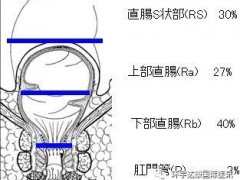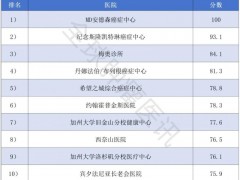在过去的一年里,全世界的科学家们都在更深入地探究这一现象。现在染色体碎裂已被证实存在于小部分但也具有相当比例的不同类型癌症中,尤其是白血病和多发性骨髓瘤
近期两个国际小组在新研究中证实染色体碎裂有可能是两种儿童肿瘤——髓母细胞瘤和神经母细胞瘤——形成过程中的一个重要事件。相关研究论文分别发表在国际学术期刊《自然》(Nature)杂志和《细胞》(Cell)上。
与神经细胞瘤的联系
在一期(3月29日)Nature杂志的一篇文章中,来自荷兰的一个研究小组对来自87名患神经母细胞瘤儿童的肿瘤样品进行了全基因组测序分析。
研究结果显示染色体碎裂也可能是驱动这种癌症的因素。其中有10个肿瘤样品显示出特征性的染色体碎裂印记。有意思的是,研究人员只在最具侵袭性的神经母细胞瘤(3期和4期)中发现了这些印记,通常这些肿瘤治疗效果不佳,且预后不良。
研究人员还发现一些最具侵袭性的肿瘤中调控神经细胞生长的基因发生了突变,这有可能导致了神经细胞生长异常而促使癌症发生。最重要的是,研究人员发现利用一种称为维甲酸的药物可以克服这一缺陷。维甲酸现常用于长期治疗某些类型的神经母细胞瘤。
这一遗传信息或许可以帮助预测维甲酸治疗对哪些肿瘤可能更有效。它还将帮助科学家们开发出治疗神经母细胞瘤的新策略。
染色体碎裂,Li Fraumeni综合征与髓母细胞瘤
在第二篇文章中,来自德国的研究人员领导的一个国际小组对来自一位Li Fraumeni综合征患者的肿瘤样品进行了全基因组测序分析,这位患者后来体内又形成了髓母细胞瘤。
Li Fraumeni综合征是一种由于遗传突变TP53基因而引起的罕见综合征,目前大约有400个家庭曾被确诊。携带者罹患其他类型癌症,包括乳腺癌、脑癌和骨肿瘤的风险要增高25倍。
研究人员在对患者的肿瘤进行详细的分析后发现了患者癌细胞中DNA的损伤模式。相比于正常细胞,这些癌细胞似乎显示出了染色体碎裂的特征。为了确定这是否是个案,科学家们随后对来自另外98位髓细胞瘤患者的样品进行了分析。
根据分析的结果,研究人员认为携带突变的TP53拷贝显著增加了染色体碎裂的机率。转而,染色体碎裂又导致了髓母细胞瘤的发生。
这两项研究为我们提供了重要的见解,或在未来使得患有这些癌症类型的儿童受益。此外,它们还开启了一扇窗口吸引科学家们更多地关注染色体碎裂在个体肿瘤中的支配作用。

doi:10.1038/nature10910
PMC:
PMID:
Sequencing of neuroblastoma identifies chromothripsis and defects in neuritogenesis genes
Jan J. Molenaar, Jan Koster, Danny A. Zwijnenburg, Peter van Sluis, Linda J. Valentijn, Ida van der Ploeg, Mohamed Hamdi, Johan van Nes, Bart A. Westerman, Jennemiek van Arkel, Marli E. Ebus, Franciska Haneveld, Arjan Lakeman, Linda Schild, Piet Molenaar, Peter Stroeken, Max M. van Noesel, Ingrid Øra, Evan E. Santo, Huib N. Caron, Ellen M. Westerhout & Rogier Versteeg
Neuroblastoma is a childhood tumour of the peripheral sympathetic nervous system. The pathogenesis has for a long time been quite enigmatic, as only very few gene defects were identified in this often lethal tumour1. Frequently detected gene alterations are limited to MYCN amplification (20%) and ALK activations (7%)2, 3, 4, 5. Here we present a whole-genome sequence analysis of 87 neuroblastoma of all stages. Few recurrent amino-acid-changing mutations were found. In contrast, analysis of structural defects identified a local shredding of chromosomes, known as chromothripsis, in 18% of high-stage neuroblastoma6. These tumours are associated with a poor outcome. Structural alterations recurrently affected ODZ3, PTPRD and CSMD1, which are involved in neuronal growth cone stabilization7, 8, 9. In addition, ATRX, TIAM1 and a series of regulators of the Rac/Rho pathway were mutated, further implicating defects in neuritogenesis in neuroblastoma. Most tumours with defects in these genes were aggressive high-stage neuroblastomas, but did not carry MYCN amplifications. The genomic landscape of neuroblastoma therefore reveals two novel molecular defects, chromothripsis and neuritogenesis gene alterations, which frequently occur in high-risk tumours.

doi:10.1016/j.cell.2011.12.013
PMC:
PMID:
Genome Sequencing of Pediatric Medulloblastoma links Catastrophic DNA Rearrangements with TP53 Mutations
Tobias Rausch1, 18, David T.W. Jones2, 18, Marc Zapatka2, 18, Adrian M. Stütz1, 18, Thomas Zichner1, Joachim Weischenfeldt1, Natalie Jäger3, Marc Remke2, 5, David Shih6, Paul A. Northcott6, Elke Pfaff2, Jelena Tica1, Qi Wang5, Luca Massimi7, Hendrik Witt2, 5, Sebastian Bender2, 5, Sabrina Pleier2, 5, Huriye Cin2, Cynthia Hawkins6, 8, Christian Beck5, Andreas von Deimling9, Volkmar Hans10, Benedikt Brors3, Roland Eils3, 20, Wolfram Scheurlen11, Jonathon Blake1, Vladimir Benes1, Andreas E. Kulozik5, Olaf Witt5, 4, Dianna Martin12, Cindy Zhang12, Rinnat Porat12, Diana M. Merino12, Jonathan Wasserman12, Nada Jabado13, Adam Fontebasso13, Lars Bullinger14, Frank G. Rücker14, Konstanze Döhner14, Hartmut Döhner14, Jan Koster15, Jan J. Molenaar15, Rogier Versteeg15, Marcel Kool2, Uri Tabori6, 12, David Malkin12, Andrey Korshunov9, Michael D. Taylor6, 16, Peter Lichter2, 19, , , Stefan M. Pfister2, 5, 19, , , Jan O. Korbel1, 17, 19, ,
Genomic rearrangements are thought to occur progressively during tumor development. Recent findings, however, suggest an alternative mechanism, involving massive chromosome rearrangements in a one-step catastrophic event termed chromothripsis. We report the whole-genome sequencing-based analysis of a Sonic-Hedgehog medulloblastoma (SHH-MB) brain tumor from a patient with a germline TP53 mutation (Li-Fraumeni syndrome), uncovering massive, complex chromosome rearrangements. Integrating TP53 status with microarray and deep sequencing-based DNA rearrangement data in additional patients reveals a striking association between TP53 mutation and chromothripsis in SHH-MBs. Analysis of additional tumor entities substantiates a link between TP53 mutation and chromothripsis, and indicates a context-specific role for p53 in catastrophic DNA rearrangements. Among these, we observed a strong association between somatic TP53 mutations and chromothripsis in acute myeloid leukemia. These findings connect p53 status and chromothripsis in specific tumor types, providing a genetic basis for understanding particularly aggressive subtypes of cancer.







































 首页
首页 咨询
咨询 方舟新药
方舟新药 营养商城
营养商城